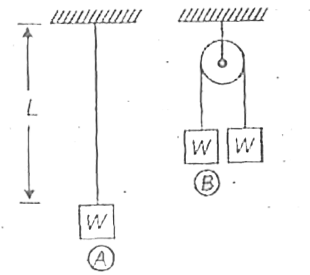(A): A steel wire of natural length .I. breaks, when elongated by length .x.. If original length is halved and elongated by x/2 it breaks.
(R) : Breaking force is directly proportional to the length of the wire
Both .A. and .R. are true and .R. is the correct explanation of .A.
Both .A. and .R. are true and .R. is not the correct explanation of .A.
A. is true but .R. is false
A. is false but .R. is true
The correct Answer is:3
Similar Questions
Knowledge Check
The maximum load a wire can withstand without breaking, when its length is reduced to half of its original length, will
Abe doubleBbe halfCbe for timesDremain sameThe maximum load a wire can withstand without breaking, when its length is reduced to half of its original length, will
Abe doubleBbe halfCbe four timesDremain sameThe maximum load a wire can withstand without breaking, when its length is reduced to half of its original length, will
Abe doubleBbe halfCbe four timesDremain same.
If in case A, elongation in wire of length L is l then for same wire elongation in case B will be

View SolutionThe length of a steel wire is l1 when the stretching force is T1 and l2 when the stretching force is T2. The natural length of the wire is
View SolutionA wire of length L and density ρ and Young's modulus Y is hanging from a support. Find the elongation in the length of wire at which wire will break:
View SolutionIf p is the density of the material of a wire and σ the breaking stress, the greatest length of the wire that can hang freely without breaking is
View SolutionA wire of length L and density ρ and Young's modulus Y is hanging from a support. Find the elongation in the length of wire at which wire will break:
View Solution
